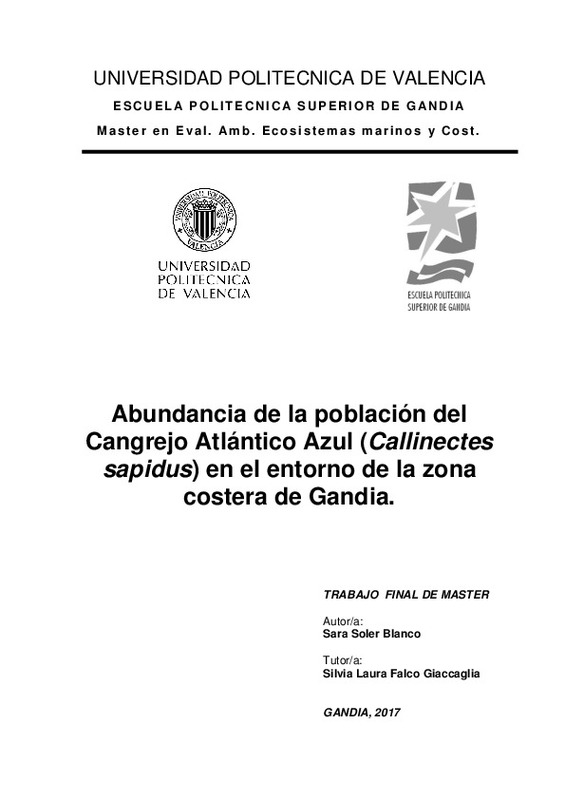JavaScript is disabled for your browser. Some features of this site may not work without it.
Buscar en RiuNet
Listar
Mi cuenta
Estadísticas
Ayuda RiuNet
Admin. UPV
Abundancia de la población del Cangrejo Atlántico Azul (Callinectes sapidus) en el entorno de la zona costera de Gandia
Mostrar el registro completo del ítem
Soler Blanco, S. (2017). Abundancia de la población del Cangrejo Atlántico Azul (Callinectes sapidus) en el entorno de la zona costera de Gandia. Universitat Politècnica de València. http://hdl.handle.net/10251/90540
Por favor, use este identificador para citar o enlazar este ítem: http://hdl.handle.net/10251/90540
Ficheros en el ítem
Metadatos del ítem
| Título: | Abundancia de la población del Cangrejo Atlántico Azul (Callinectes sapidus) en el entorno de la zona costera de Gandia | |||
| Autor: | Soler Blanco, Sara | |||
| Director(es): | ||||
| Entidad UPV: |
|
|||
| Fecha acto/lectura: |
|
|||
| Resumen: |
El cangrejo azul, Callinectes sapidus Rathbun (1896), originario de las costas occidentales del Océano Atlántico, ha sido introducido en aguas mediterráneas donde actualmente se considera una especie invasora. Con el ...[+]
The blue crab, Callinectes sapidus Rathbun (1896), originally from the western
shores of the Atlantic Ocean, has been introduced into Mediterranean waters
where it is now considered an invasive species. The present study ...[+]
|
|||
| Palabras clave: |
|
|||
| Derechos de uso: | Reconocimiento (by) | |||
| Editorial: |
|
|||
| Titulación: |
|
|||
| Tipo: |
|
Localización
recommendations
Este ítem aparece en la(s) siguiente(s) colección(ones)
-
EPSG - Trabajos académicos [5005]
Escuela Politécnica Superior de Gandia







